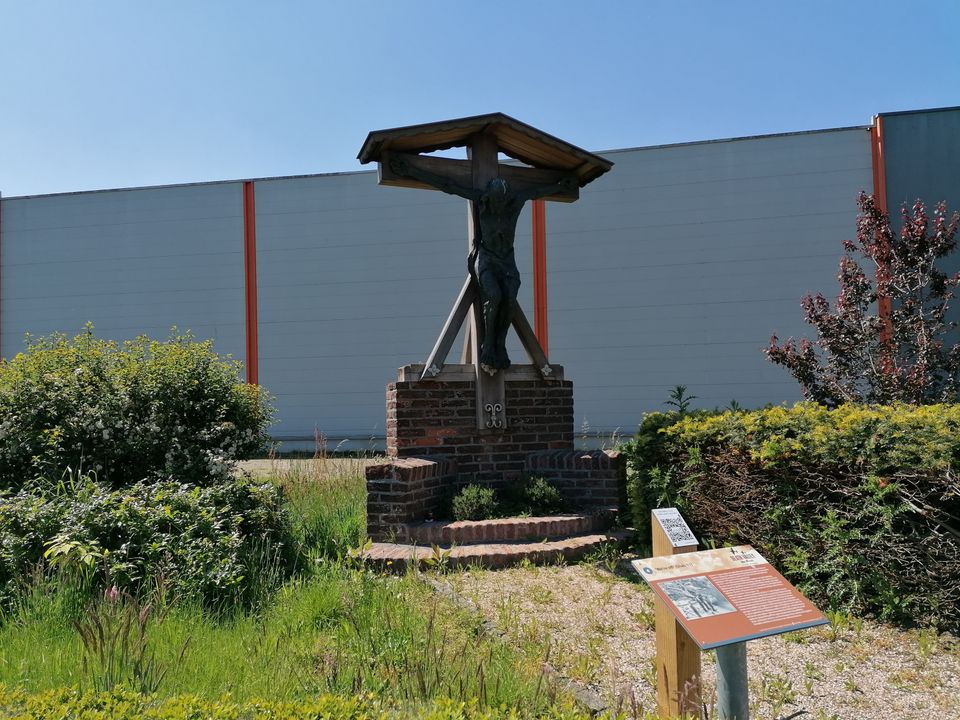Crucifix Battle near Sluis XI
The "monument for Dutch soldiers" in Someren was erected in memory of the Dutch soldiers who fell in the May days of 1940 in the vicinity of Sluis XI, to all residents of Someren and Asten who were in military service between May 1940 and September 1944. and to all fellow citizens who died as soldiers during the police actions in the former Dutch East Indies. This memorial was unveiled on May 15, 1949 and restored in 1994.
In the context of 75 years of liberation, a Death Valley De Peel information board was placed in September 2019 with the following text;
At Sluis XI there used to be a drawbridge as a c…
The "monument for Dutch soldiers" in Someren was erected in memory of the Dutch soldiers who fell in the May days of 1940 in the vicinity of Sluis XI, to all residents of Someren and Asten who were in military service between May 1940 and September 1944. and to all fellow citizens who died as soldiers during the police actions in the former Dutch East Indies. This memorial was unveiled on May 15, 1949 and restored in 1994.
In the context of 75 years of liberation, a Death Valley De Peel information board was placed in September 2019 with the following text;
At Sluis XI there used to be a drawbridge as a connection between Asten and Someren. During the Second World War, this place proved to be of strategic importance. Both during the German invasion in May 1940 and during the liberation in September 1944 there was heavy fighting. On 10/11 May 1940, Dutch soldiers of the Peel Division, who had previously been located at the Peel-Raamstelling, had to withdraw behind the Zuid-Willemsvaart and if possible delay the German advance. About 20 Dutch soldiers were killed in the fighting between locks 10 and 12. At Sluis 10 (between Asten and Lierop) Germans were also killed, according to the annals "two wagons" full.
In 1944 two brigades of the British 11th Armored Division commanded by Major General George "Pip" Roberts crossed the channel at Sluis 11 from 22 September 1944. They came from the direction of Heeze and Helmond-west and had to enter Helmond-east via Asten and Deurne. Oberst Ramoth of the Grenadier-Ersatz und Ausbildungs-Regiment 269 saw through that plan and had the bridge jump. Under heavy artillery fire, the British built a Baily Bridge in the night of 21 to 22 September, after which they crossed the channel on the 22nd morning. Tank commander Don Bulley led the charge with the cry, "We're off!" He was killed a few minutes later. In the bitter artillery and infantry fighting, the English lost dozens of soldiers and the Germans many times over.



